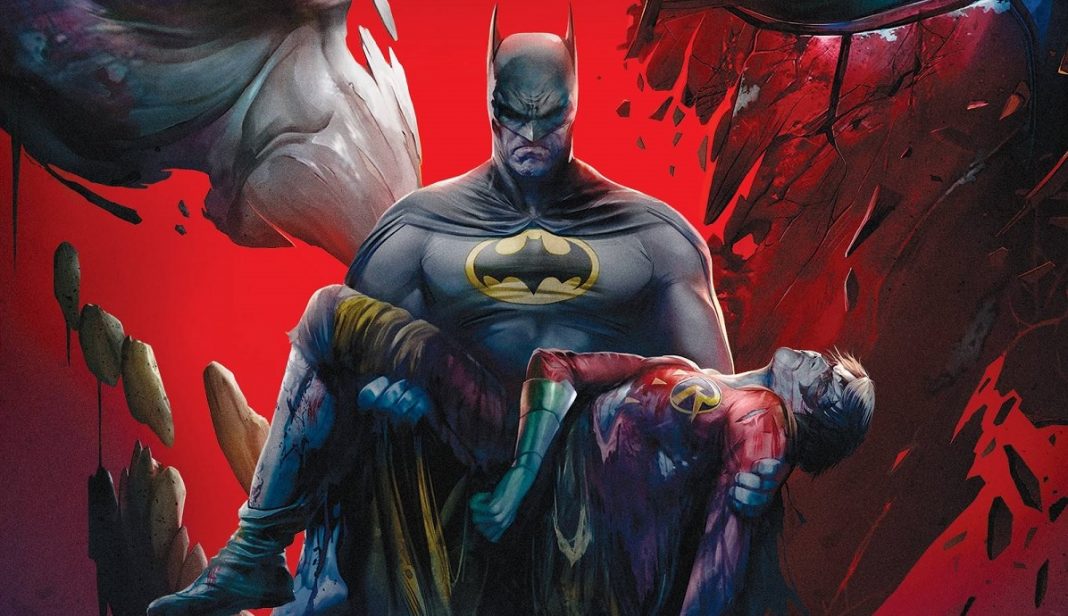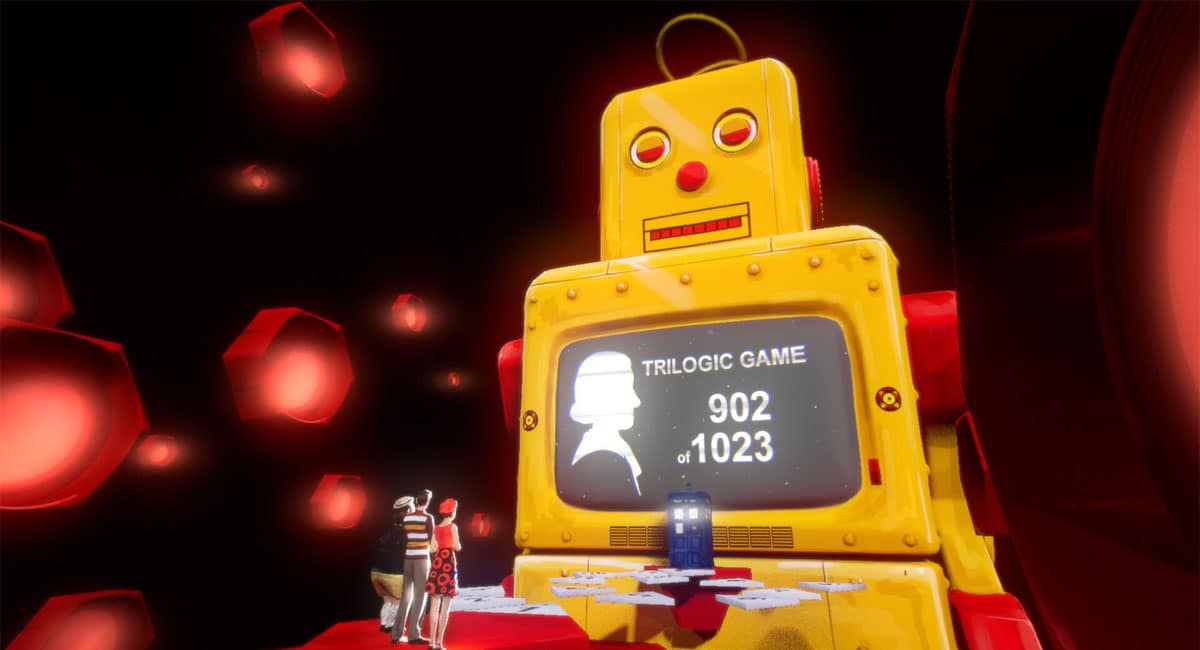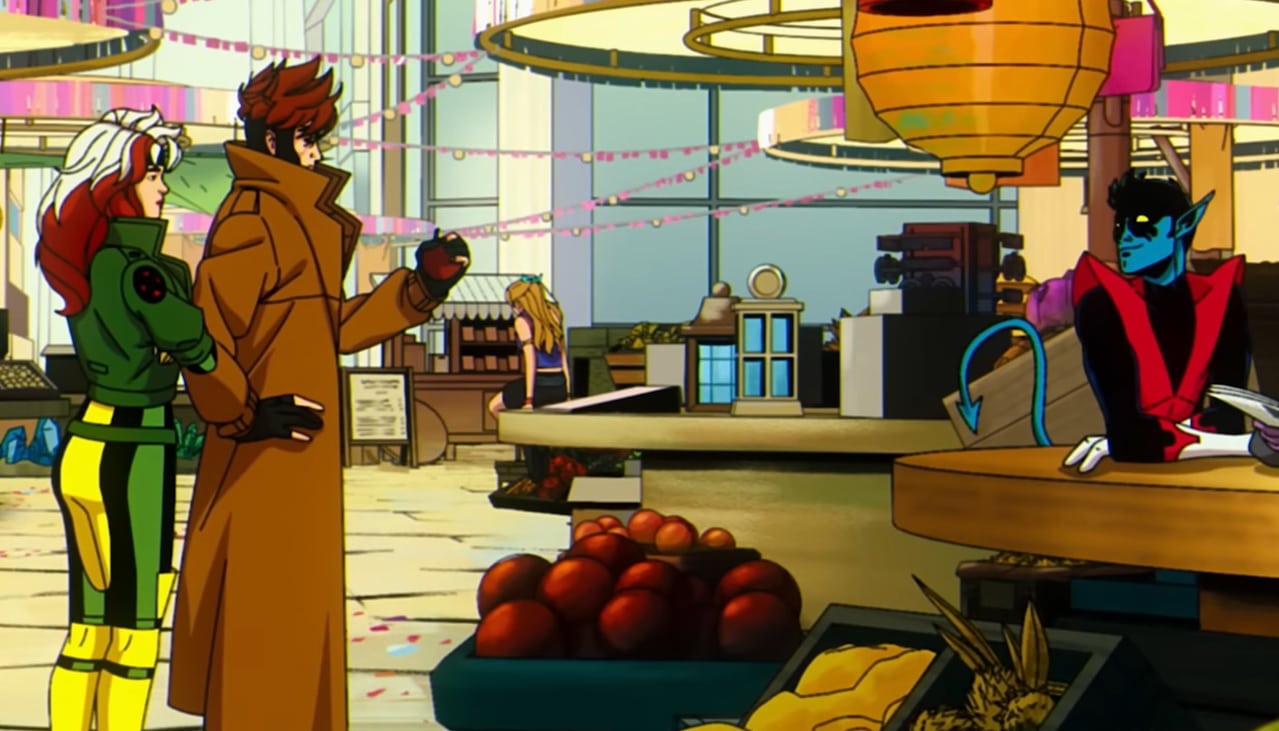I’m going assume most readers of The Beat are already acquainted with the infamous Batman comics storyline “A Death in the Family” that saw the much-maligned second Robin, Jason Todd, perish in a warehouse explosion orchestrated by the Joker thanks to a fan vote-in publishing stunt. For those who aren’t savvy enough to search Wikipedia, I highly recommend the oral history of “A Death in the Family” courtesy of The Beat’s own Joe Grunenwald. Since it’s been depicted in various media, fans wondered how the Batman: Death in the Family animated adaptation would differentiate itself from the 2010 Batman: Under the Red Hood film.
The answer came when it was revealed that the film would venture into the popular interactive format, a rather clever and innovative modern day update to the analogue days of voting by phone.
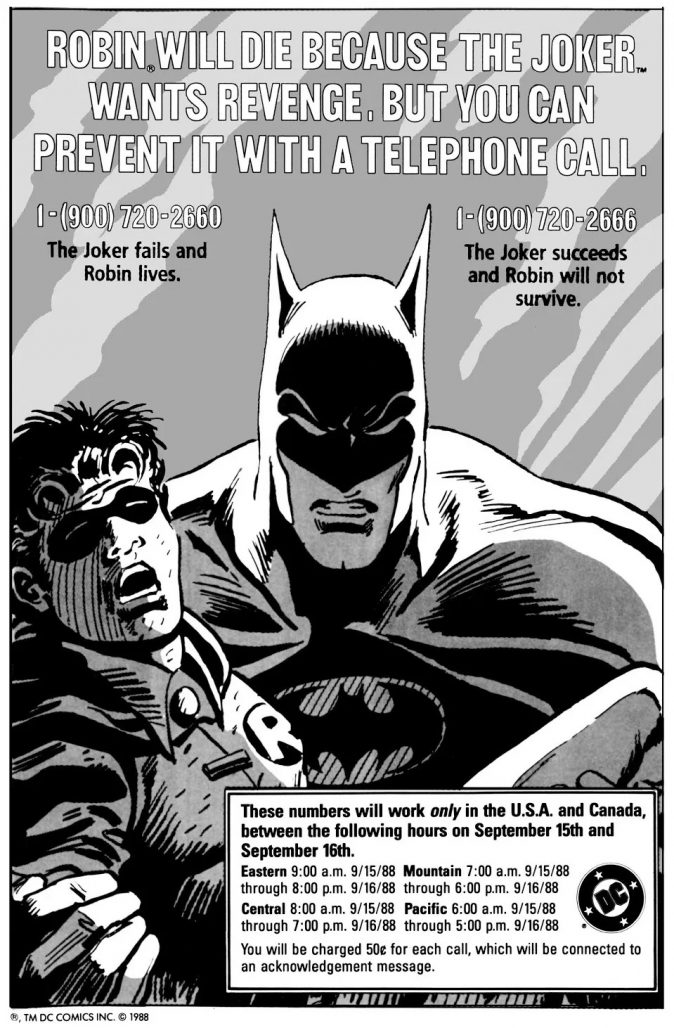
Interactive storytelling has certainly grown in popularity in the past decade due in no small part to the advent of streaming services. Without a doubt, the format reached a zenith when Black Mirror: Bandersnatch was released on Netflix in 2018. Bandersnatch elevated the interactive storytelling concept beyond a cheap gimmick with a meta-narrative that challenged viewers’ perceptions that you’d expect nothing less from the science-fiction anthology series.
Though it’s tempting to believe Bandersnatch influenced Death in the Family, according to writer/director/producer Brandon Vietti, he had actually completed the script long before Bandersnatch came out. “Technology has evolved to the point where branched storytelling in filmmaking is more of a possibility than ever,” explained Vietti. “I was excited to play with the idea [and] revisit the most famous branching option in comics history which was the moment where fans got to decide whether Jason Todd lives or dies at the hands of the Joker. That was really the story inspiration: exploring different branches and creating even more choices from those branches. That was kind of the fun of the project for me.”
After directing the aforementioned Batman: Under the Red Hood animated film, Vietti is back at the helm for Batman: Death in the Family, but with the added responsibilities of writing and producing. As co-producer on the acclaimed Young Justice animated series, Vietti’s been displaying his aptitude as a wordsmith. “Honestly, as I progress in my career it gets harder to separate the two. I think writing and directing for me go hand-in-hand so it was effortless for me to do both duties on this,” he said. “It was actually more important on this project than any other that I do the writing because I was also simultaneously doing the editing. Usually these duties are separated—the writer, the director directs in pre-production, and often it’s the producer who’s doing the editing in post-production.”
Vietti elaborated further about the necessity of “wearing three hats” for Batman: Death in the Family. “I was planning what I would be doing in the editing room as I was writing the script. I was pre-editing basically,” he revealed. “I was planning that last step while I was doing the first step. I think because of the complicated nature of a branching story it needed to be that way. Branching narratives can be so complex that it’s hard to pass on the duties through various stages to different people. It kind of lives in one brain and it has to stay with that brain through all the different stages of production.”
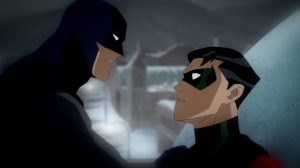
Death in the Family presented Martella the chance to unearth new layers for Batman’s wayward sidekick. “Even just getting the call knowing I was not only getting to play this character again but playing Jason Todd in a lot of different ways I didn’t get to explore the character in Under the Red Hood. This was a cool opportunity to explore new parts of him and to show the audience more of who is and who he could become. It was an exciting experience as an actor to do more with this character.”
If you’ve ever seen the episode “She’s Fifty” of Pamela Adlon’s semi-autobiographical series Better Things you know that voice actors have to occasionally re-audition for parts they’ve previously played. Thankfully, that wasn’t the case for DiMaggio with The Joker. “I didn’t have to audition a second time to play the part again. They just went back right into it. They’re using the Under the Red Hood storyline and they wanted to use those performances again. I didn’t have to worry about that. But when someone tries to make you audition for something all over again, it’s kind of a slap in the face but sometimes that’s what happens.”
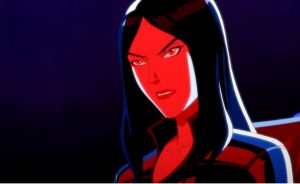
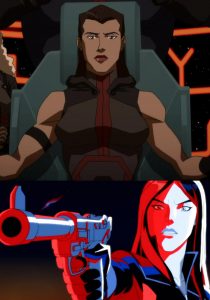
Young Justice fans will recall that Fazal voiced Cassandra Savage, the daughter of an immortal villain, a character not dissimilar to Talia al Ghul. Cassandra made her debut in the episode “Evolution” penned by Vietti, who was clearly impressed by her performance. “I can’t speak highly enough about her skill. There aren’t just many people who can do the incredible range of voices that she can do. She came up with, again, another unique and original character for Talia in Death in the Family.”
Vietti’s admiration for Fazal is reciprocated by the actress herself. “I learned that Brandon Vietti scripts are gold. If you get a Brandon Vietti script, you know it’s going to be good. You know it’s going to be complex and satisfying,” praised Fazal. “When he then approached me to voice Talia in this adaptation of Death in the Family I was so excited! Not only because it was an adaptation of this famous story from the comics but it’s a Brandon Vietti script. It’s going to be amazing. I was so flattered and grateful to collaborate with Brandon not only on Young Justice but this project as well. I have so much respect for his work.”
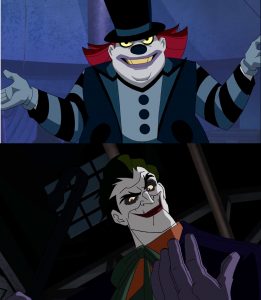
The Joker isn’t the first time DiMaggio has voiced a killer clown, having portrayed Zombozo in the Ben 10 franchise. However, DiMaggio doesn’t perceive any ostensible overlap. “I think they’re two different guys. The only thing that they have in common is that they share the same guy’s throat. It’s the same guy’s acting choices.” In an interview with The A.V. Club, DiMaggio noted that his role as Dr. Drakken in Kim Possible was him working out his Harvey Korman demons. Evidently, he’s still got some left. “I get to play a lot of bad guys. My bad guys are rooted in Harvey Korman [as] Hedley Lamarr in Blazing Saddles. There’s a lot spread over my work which is really funny.”
Inversely, Jason Todd is a far cry from Martella’s best known role as Phineas Flynn, one half of the dynamic duo in Disney’s Phineas and Ferb cartoon. Some viewers may be taken aback, akin to the initial doubts some held when Bryan Cranston went from the over-the-top dad on Malcolm in the Middle to Walter White in Breaking Bad (a comparison that delighted Martella). “I think all actors like playing different roles and getting to express themselves differently,” said Martella. “I probably enjoyed the villain versions of Jason Todd the most just because they were darker and that was fun for me to play and explore. Some of that art and those scenes are my favorite parts of the film.” Martella joked at his excitement of discovering how Jason Todd would affect his future performances as Phineas.
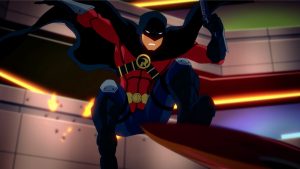
Martella also emphasized the importance of Vietti and Gleason, compounded by the challenge he faced in portraying Jason Todd along divergent storylines. “I’d be lying if I said I was doing it perfectly the whole time. I certainly wasn’t. It was definitely a team effort in keeping it on track. It’s super rare to get the chance to play a character in this many different ways.”
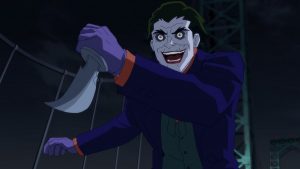
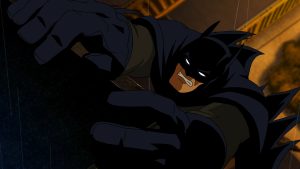
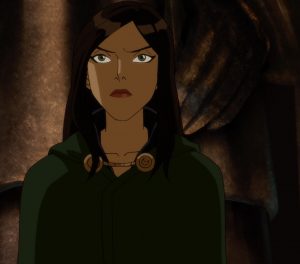
Animation affords more freedom compared to live-action in quite a number of ways. For voice actors, they truly appreciate the near boundless casting possibilities available to them. It’s a sentiment shared by DiMaggio, whose diverse cartoon roles include Bender the foul-mouthed robot on Futurama and the laid-back Jake the Dog on Adventure Time. “That’s the absolute 100% best part of doing animated shows, films, and projects. You get to play stuff that you would never get to play on camera. That’s a beautiful thing as an actor to get to be able to play those kinds of roles. That’s one of the things that I love about what I get to do. I get to play these characters all across the spectrum.”
Limited casting opportunities have historically been more pronounced for minority actors. It’s one of the reasons Fazal, a Pakistani-American, gravitates towards animation. “Things are a lot better now than ten years ago and ten years before that,” Fazal said. “I always say, ‘It’s really good to be brown in Hollywood right now.’ There’s a lot of opportunity. Casting is happening where they want to cast authentically or as close to authentic as possible even in animation. In theory, [in] an ideal world all things being equal you would cast an actor solely based on performance. But things are not equal. Things are not all ideal.” As Fazal summed it up, “It’s the ultimate freedom of an actor to play outside what you look like. It’s not just about playing outside your ethnicity. It’s about playing to the extremes of your instrument, to the boundaries of your imagination.”
As a filmmaker, Vietti wasn’t nearly as restricted with Batman: Death in the Family and its R-rating compared to the PG-13 rated Under the Red Hood. “It was liberating for Batman: Death in the Family to go into the R-rated territory because I think the subject matter lends itself to that well,” said Vietti. “I felt that this subject and this character, Jason Todd specifically, lends himself to horror. I wanted to lean into that and have that freedom to explore R-rated material in a way that I feel was integral for the character in showing who he is and what he had become and what his journey had been.”
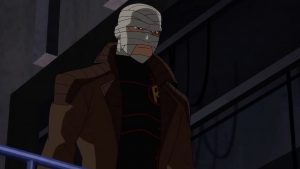
While John DiMaggio couldn’t say to what extent he channeled his frustrations of the last four years to tap into the madness of the Joker for this project, he’s at a loss for the chaos that has plagued our country. Likewise, Vietti hadn’t intended for Death in the Family to serve as an expression for our pent-up emotions but upon scrutiny realized the possibility. “Much of Death in the Family was created and completed prior to obviously where we’re at now in the world which is a pretty tough spot. So I can’t say the process of creating Death in the Family was cathartic,” admitted Vietti. “But I guess I do hope that with this project, as unique and immersive as it is, that it can help maybe take people’s minds off things that are going on in the world. To me there’s something that can be liberating about horror, the superhero genre, [and] watching stories about conflict. You’re kind of watching things that are even worse than what may be going on around you. I think there can be a catharsis, a release to help you deal with some of the realities that may be going on in the world around you.”
DiMaggio also sees the potential of Death of the Family as quasi-therapy. “We’re living in some very strained and difficult times quite honestly. Finding a little bit of solace in entertainment in something like this is worth your while, I would definitely say watch this film and enjoy it thoroughly. And see where it takes you.”
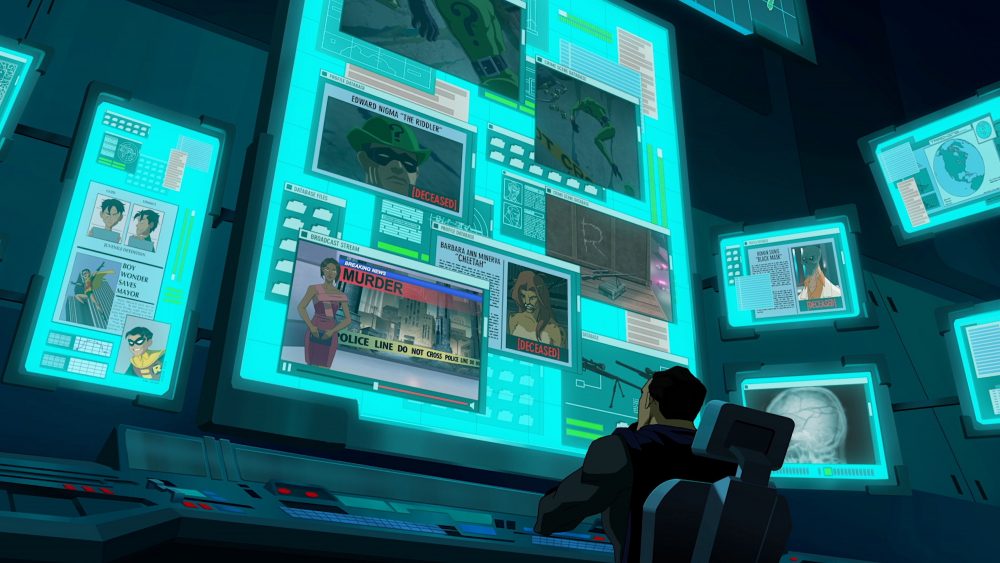
Elucidating her thoughts, she added, “As much as you’re enjoying the story that plays out you can’t help but think about, ‘What part did I play? How was I responsible in this particular outcome?’ Even if you make the best, most informed decision you think, ‘OK. I’m going to choose this path for the best interests of everyone involved,’ it might not end up that way. You try to do the best you can but it doesn’t always work out in your favor and you end up hurting somebody. I do think that this film because you the viewer take such an active role in the story making you have to examine your own responsibility. I think everybody could afford to look at their own choices and see what they are accountable for right now in real life.”
I don’t think the filmmakers could have imagined Death in the Family would be released at a time when our everyday personal choices could be as consequential as determining life or death. “Choices matter,” said Greenwood. “The choices that we’re given the opportunities to make in a moment where we can’t see the larger landscape or imagine the outcome, you’re still projecting some kind of outcome. Otherwise you wouldn’t have made that choice. Those choices really matter and they’re really dangerous and you can never know. In a way it reflects what we all go through all the time. Nothing is guaranteed. Nothing is given. Nothing is forever. We better to do our very best to land on the choice that is the most human.”
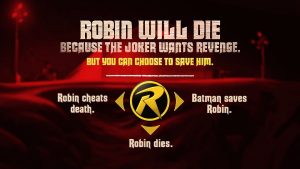
Furthermore Vietti proposed, “Things are deeper now. I think everybody knows that. These themes are laid bare and out there every day in news headlines and the world around us and our friends and our family. These sorts of psychological issues are more well known and appreciated now. You can’t ‘cartoonify’ this stuff anymore. There’s a responsibility to portraying it.”
When all is said and done, Vietti retains an optimistic outlook. “I hope people will find something in it that is a release. Something that they may learn from. There is heart in this story to counterbalance the horror.”
Batman: Death in the Family is available now on Blu-ray and Digital


